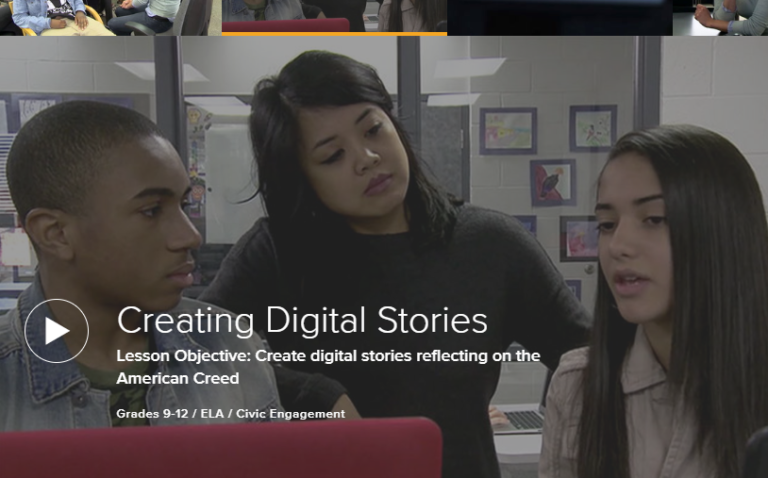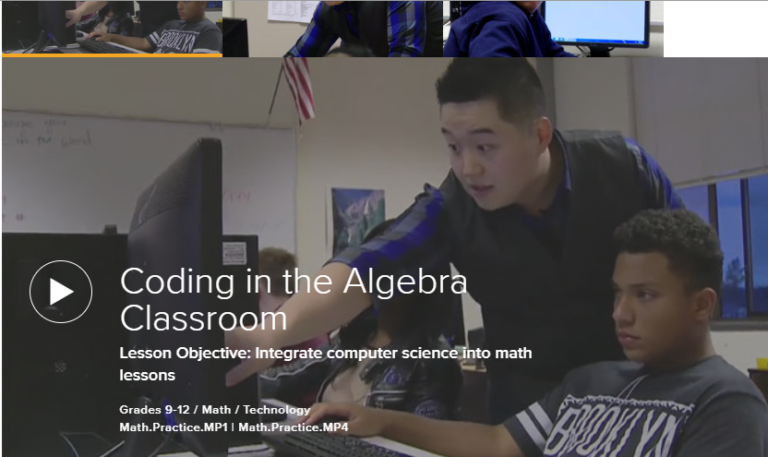Providing training on how to use the new devices, apps or Learning Management System (LMS) may seem the highest priority when a district is embarking in a major technology innovation. While this is indeed needed, it is even more important to start by developing a common vision for the new learning opportunities we are trying to create for students, and why, as well as an appreciation for the kind of instructional changes required to achieve those goals – as such a vision is what will guide all other instructional decisions.
Indeed, several educators who have led digital conversions or 1:1 initiatives in districts across our region stated that they wish they had started with a focus on instruction rather than on the technology – as documented in this short video.
Digitally-rich teaching in action
Developing a shared vision of the kinds of technology-supported learning experiences your district is striving for is critical – as this should inform all other decisions and efforts!
What kind of teaching and learning is your district trying to promote by leveraging technology? What does digitally-rich teaching mean for you? As you get started, it’s likely that not many people will know how to respond to this question, or will provide different and limited answers depending on their previous experiences with technology.
Watching some classroom videos together, and then discussing what everyone values (or not) in them, can be very powerful to clarify one’s vision of digitally-rich teaching– especially when the chosen vignettes portray innovative teaching practices and learning experiences that would not have been possible without the technology.
We have found the following short videos from The Teaching Channel particularly useful for this exercise:
Writing Digital Stories
Watch this 10-minute video to see a high school classroom engaging in a unit about the American Creed, where digital tools and digital content enable student engagement and collaboration with primary sources and with each other.
It’s a great example of how technology can be instrumental in transforming teaching practices – without needing to use many apps!

Coding in the Algebra Classroom
Watch this 10-minute video to see how a math teacher leverages computer programming to support students making sense of hard-to-grasp fundamental concepts in algebra.
Another great example – this time showing how technology can impact curriculum, in addition to teaching practices.

There’s also great value in sharing stories through video of digitally-rich classrooms in your district and other local schools – although it’s resource intensive to create these video vignettes to convey the richness of digitally-rich learning!
Frameworks to identify different kinds of digitally-rich teaching
What makes the previous illustrations of digitally-rich teaching different from other possible examples of using technology in the classroom?
There are at least three conceptual frameworks that districts have found useful to develop a common language to talk about different kinds of technology integration: SAMR, TPACK and PIC-RAT.
SAMR
The SAMR model identifies four complementary ways to integrate technology in teaching (Substitution, Augmentation,
Modification, and Redefinition).
Watch this 4-minute video for a brief explanation of these options, along with concrete examples of each.
PIC-RAT
The PIC-RAT framework essentially combines the SAMR model of technology integration with a pedagogical dimension focusing on students’ level of engagement.
Watch this 4-minute video for a brief explanation of this framework.
To better understand and appreciate these frameworks, we encourage you to analyze the technology-rich learning experiences taking place in the previous two classroom vignettes using each of these frameworks. Especially if you engage in this exercise as a group, you will see that the task is not as straightforward as you may have expected.
Indeed, these frameworks are not intended to be used as a rigid taxonomy to evaluate instruction, but rather as conceptual tools to clarify and communicate one’s goals for technology integration as well as to encourage richer uses of technology in the classroom.

